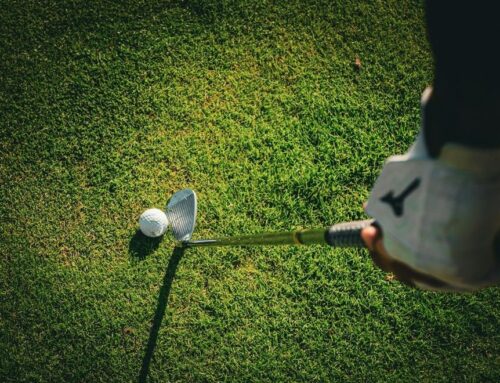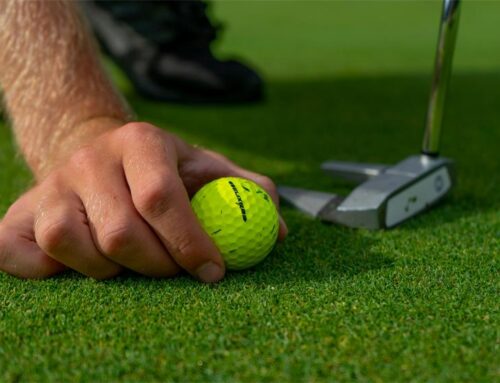Choosing the right golf clubs is the first step in learning how to play golf. Shorter clubs are easier to control and help you hit the sweet spot, while longer clubs are better for achieving distance. Lighter clubs allow for faster swings, resulting in longer distances, while heavier clubs produce more stable ball trajectories. It’s essential to seek professional advice when choosing shafts and consider your swing speed when selecting the right flex.
Let’s dive deeper into what to look for when choosing golf clubs.
What to Look for When Choosing a Golf Club

Length
There’s an old saying: “An inch longer, an inch stronger; an inch shorter, an inch clever.” The same principle applies to golf clubs.
Longer clubs are beneficial if your goal is to maximize distance. The added length generates more centrifugal force, increasing clubhead speed and, consequently, distance. However, this should be balanced with swing rhythm and personal preference. Excessively long clubs can make it difficult to hit the sweet spot, leading to mishits like slices and hooks.
Shorter clubs, on the other hand, are easier to control and improve accuracy. While distance is important, accuracy is often more crucial in golf. Shorter clubs allow for more consistent strikes, making it easier to hit the sweet spot and effectively use your distance without losing precision.
Weight
The weight of your golf clubs also plays a significant role in your game. Lighter clubs enable faster swings and can help you achieve greater distances. However, if clubs are too light, you may rely too much on arm strength, which can reduce centrifugal force and, over time, lead to a decrease in clubhead speed. Additionally, overly light clubs may result in less stable swing motions and fewer effective strikes.
Heavier clubs, in contrast, provide more stability in the ball’s trajectory. However, if they’re too heavy, they can cause players to grip the club too tightly during the backswing, which goes against the principle of a relaxed swing. This results in a lower swing speed at impact, leading to a loss of distance.
When selecting the length and weight of your golf clubs, consider your individual swing characteristics and preferences. The key is to choose clubs that you can swing naturally and comfortably, ensuring that you can achieve optimal performance on the course.
Flexibility
A golf club’s flexibility, or shaft stiffness, plays a key role in trajectory stability and ball distance. Softer shafts allow for greater distance by providing more flexibility, while stiffer shafts offer a more stable trajectory and better control.
In the golf club manufacturing industry, most manufacturers categorize shaft flexibility into five main specifications: Ladies (L), Amateurs (A), Regular (R), Stiff (S), and Extra-Stiff (X). However, it’s important to note that manufacturers may have different standards for defining these flex categories. Therefore, a Regular (R) flex from one manufacturer might not feel the same as a Regular (R) flex from another.
Get professional advice
Whenever possible, seek professional advice when selecting your golf clubs. A golf fitter can help you choose the right shaft stiffness based on your swing speed. If you have a fast swing speed, you may benefit from a stiffer shaft, whereas a slower swing speed would typically pair better with a more flexible shaft.
Choosing the Right Golf Club: 10 Top Tips
Appearance
The visual appeal of a golf club, with its colors and design, can make the selection process more exciting. A club that looks attractive may inspire confidence and increase your interest in using it.
Feel
The club should feel balanced in your hand, considering weight, length, and grip thickness. The ideal weight depends on your physical condition: if you have a strong physique, a slightly heavier club may help you achieve greater distance. For those with smaller physiques, such as older adults, women, and children, a lighter club is typically recommended.
While clubs of the same model generally have similar lengths, such as a 45-inch driver, it’s important to find what feels most comfortable to you. The grip should not only feel comfortable but also be thick enough to suit your swing. A thicker grip reduces wrist flexibility, making it easier to hit a slight fade. Conversely, a thinner grip can help promote a slight draw. Comfort and personal preference should guide your choice of grip thickness.
The feel of hitting the ball
Before purchasing a golf club, take a few shots and pay close attention to how the club feels when the clubhead makes contact with the ball. Many modern iron clubheads are made from soft-forged steel, which provides an excellent ball-striking feel. This material is particularly suited for mid-to-high handicap golfers, ending the era when forged irons were typically unavailable for players in these handicap ranges. This sensation is often referred to as “getting a good feel for the ball.”
Sound
The sound produced when you strike the ball is another important consideration. While sound does not directly affect the trajectory, distance, or direction of the ball, it can influence your mood and confidence. A pleasing sound when you hit the ball can boost your morale, while a harsh or off-putting sound might affect your performance. Woods, in particular, are more sensitive to sound, making it an even more noticeable factor.
Trajectory
The flight trajectory of the ball is influenced by the loft angle of the club and your habitual swing. Different brands may slightly vary in their loft angles, even for clubs within the same model. The only way to truly determine if a club’s trajectory suits your needs is to test it out yourself on the course or range.
Distance
The flight distance of the ball is influenced by several factors, including the stiffness of the shaft, the material of the clubface, weather conditions, the quality of the ball, and the player’s physical fitness. Of these, the shaft is the most important factor, often referred to as the “engine” of the golf club.
Powerful players tend to use an “S” (stiff) flex or “F” (slightly stiff) flex shaft, while regular players typically use an “R” (regular) flex shaft. Women and seniors generally benefit from an “L” (soft) flex shaft. Achieving the desired distance requires selecting the right shaft for your swing.
Price
Instead of focusing solely on the brand, consider the “cost-performance ratio.” It’s essential to choose a club that offers the best value for your needs and performance, rather than just opting for the most expensive or well-known brand.
Craftsmanship
When evaluating a golf club, it’s important to inspect the craftsmanship. Check the packaging for any damage, ensure the plating and inlay work is refined, and confirm that the clubhead and shaft are securely connected. Additionally, the alignment aid on the grip should be clearly visible and well-constructed.
Service
When making a purchase, consider the level of service you receive at the store. Do they offer VIP treatment, such as complimentary gifts or beverages? A positive shopping experience can enhance your overall satisfaction.
After-sales service
It’s important to understand how the store handles quality issues, such as returns, repairs, or exchanges. To ensure that any issues with the club will be resolved properly, it’s a good idea to request written commitments regarding their after-sales policies.






Leave A Comment